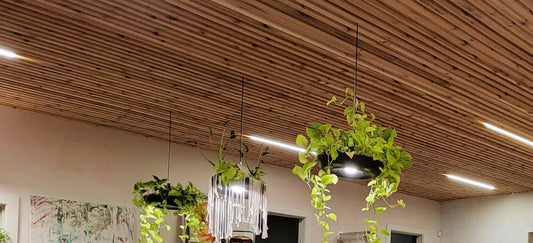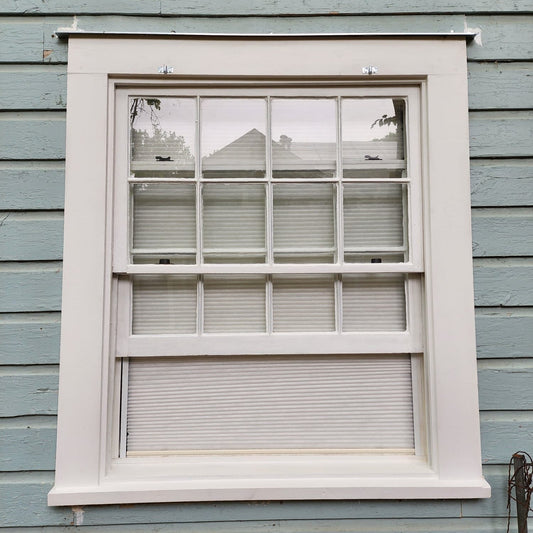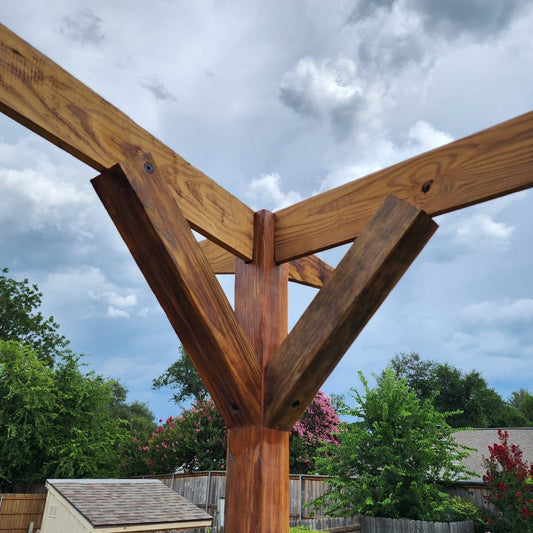
The Gazebo Blog
Share
Design First: Why Every Great Gazebo Starts with Vision
When building anything lasting whether a home, a piece of furniture, or a gazebo design must come first. In outdoor architecture especially, form and function are not separate ideas. A gazebo isn’t just a shade structure or a backyard decoration; it’s a focal point, a gathering space, and in many ways, a reflection of the people who use it.
That’s why we start every project, no matter the size, with one simple question:
How should this space feel when it’s finished?
A well-designed gazebo doesn’t overpower the landscape; it elevates it. Its lines speak the same language as the house nearby. Its proportions respect the human scale. And its materials connect the structure to the story of the place.
Why Reclaimed Longleaf Pine: The Material with a Past—and a Future
For this particular gazebo, we made a conscious choice: to use reclaimed longleaf pine wood a rare, dense, and historically significant material that most modern builders never get their hands on. This wood came from old Texas buildings and barns, some dating back nearly a century.
Why reclaim it?
Because you can’t buy wood like this anymore.
Not from a lumber yard. Not from a catalog.
This wood grew slowly, naturally, for over 100 years and it shows. Its tight grain, natural oils, and resinous composition make it incredibly durable against Texas humidity, pests, and heat. It’s been seasoned by decades of exposure. It’s strong. It's stable. And most importantly, it has soul.
Using it isn’t just sustainable it’s architectural storytelling. You’re giving a second life to something that already stood the test of time.
From Salvage to Showpiece: Preparing Reclaimed Wood
Reclaiming wood is not a shortcut; it’s a commitment.
First, we source the beams often coated in dust, nails, oxidation, and sometimes even oil. Each piece is inspected and denailed by hand. We don't rush this part. One missed fastener could damage a blade or ruin a precision cut.
After the metal is removed, the wood is surface planed to reveal its hidden grain beneath the aged exterior. Depending on the intended finish, we may leave some of the patina intact—or take it down further for a cleaner look.
Then comes kiln drying, or in some cases, a long acclimation process in our shop, depending on moisture levels. We measure every board's humidity. We want that wood to be stable, not twist or cup once installed.
Measuring, Marking, and Cutting: Architectural Precision
With reclaimed wood, each board is unique. No two are perfectly straight, and no two have exactly the same dimensions.
So, we treat every joint, every miter, and every tenon with the precision of furniture-making. The marking and layout process is detailed and deliberate—especially when integrating traditional joinery or hiding fasteners.
We also consider wood movement, orientation, and grain direction. This isn’t dimensional lumber from a big-box store. It demands and deserves craftsmanship.
The Build: A Structure Made to Endure
Finally, the build. This is where everything comes together design, materials, craftsmanship. The posts go in place, usually oversized and robust. Beams are joined with concealed hardware or traditional joinery, depending on the aesthetic. Braces are sculpted to add both beauty and strength.
We design every component to shed water and allow airflow—because longevity isn’t just about materials, it’s about design intelligence.
The result?
A custom gazebo built from old-growth pine, reborn into something that will last another 100 years. A structure that doesn’t just sit in your yard it belongs there.
Final Thoughts
When you choose to build with intention, every decision matters. The wood you use. The lines you draw. The care you take.
And when those choices are rooted in history, sustainability, and craftsmanship, what you build isn’t just better—it’s unforgettable.


